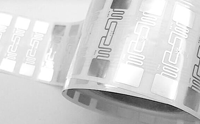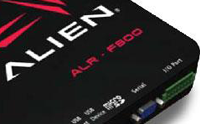Solution
Introduction to Ruizhang solution:
A complete logistics information system includes subsystems of distribution, storage, transportation, settlement and administration and others which are independent and interrelated. These subsystems realize logistics and distribution, smart warehouse management, transportation scheduling management, automated settlement, logistics enterprise resource management and other system functions.
The RFID information system built on top of RFID hardware and software technology It makes the fundamental changes to the whole process including production, storage, procurement, transportation, sales and consumption. Currently, RFID technology has played an important role in many aspects of logistics.
Production:
The application of RFID technology to production lines can help achieve the automation of production line and the identification and positioning of raw material and products. This will greatly reduce the cost and error rate of manual reading, and also improve the efficiency and quality of production significantly. RFID technology can also collect and process the information on products to help production staff gain information easily on operational conditions of the entire production line and the production progress.
Delivery/Distribution:
The adoption of RFID technology can greatly accelerate the distribution and improve the efficiency and accuracy of sorting and delivery. It can reduce human labor and delivery cost. If all the products that arrive at the central distribution center are attached with RFID tags, the reader can read all the tags on the packages loaded on the same pallet when entering the center. The system will compare the information with the delivery record to detect potential mismatch, and then update the latest location and status for the RFID tags.
Transportation:
When the goods and vehicles are attached with RFID tags; and the checkpoint along the transportation route are installed with RFID readers, the readers will detect the RFID tags and send the tag information, geographical location and other information to the transport dispatch center via the Internet. In this way, the suppliers and the dealers will be able to access the current status of the goods more easily.
Storage:
The RFID technology is widely used in the storage and withdrawal of goods and stocktaking. When RFID tagged goods enter the storage center, the RFID reader at the entrance will automatically identify the tags and complete the inventory. Throughout the warehouse management, the actual functions of receiving, pickup, shipping and other system formulated functions are combined with RFID technology to efficiently perform various business operations such as designated stacking areas, pick-up and replenishment.
Sales:
RFID can improve retailers’ inventory management. When the goods are taken away by the customer, the shelves equipped with RFID reader will report the status of the goods in real time and notify the system to replenish at an appropriate time. Meanwhile it monitors the movement and location of RFID-tagged goods. All of these will significantly reduce labor cost, reduce mistakes and improve efficiency.
The introduction of RFID technology gives full play to the rapid, real-time, accurate collection and processing of information. Such good features enable the enterprises to accurately grasp flow direction and changes of the business flow, logistics, information flow and cash flow in real time. Meanwhile it makes all business processes of the supply chain more coordinated and consistent, and improves the economic efficiency of the entire supply chain.




























